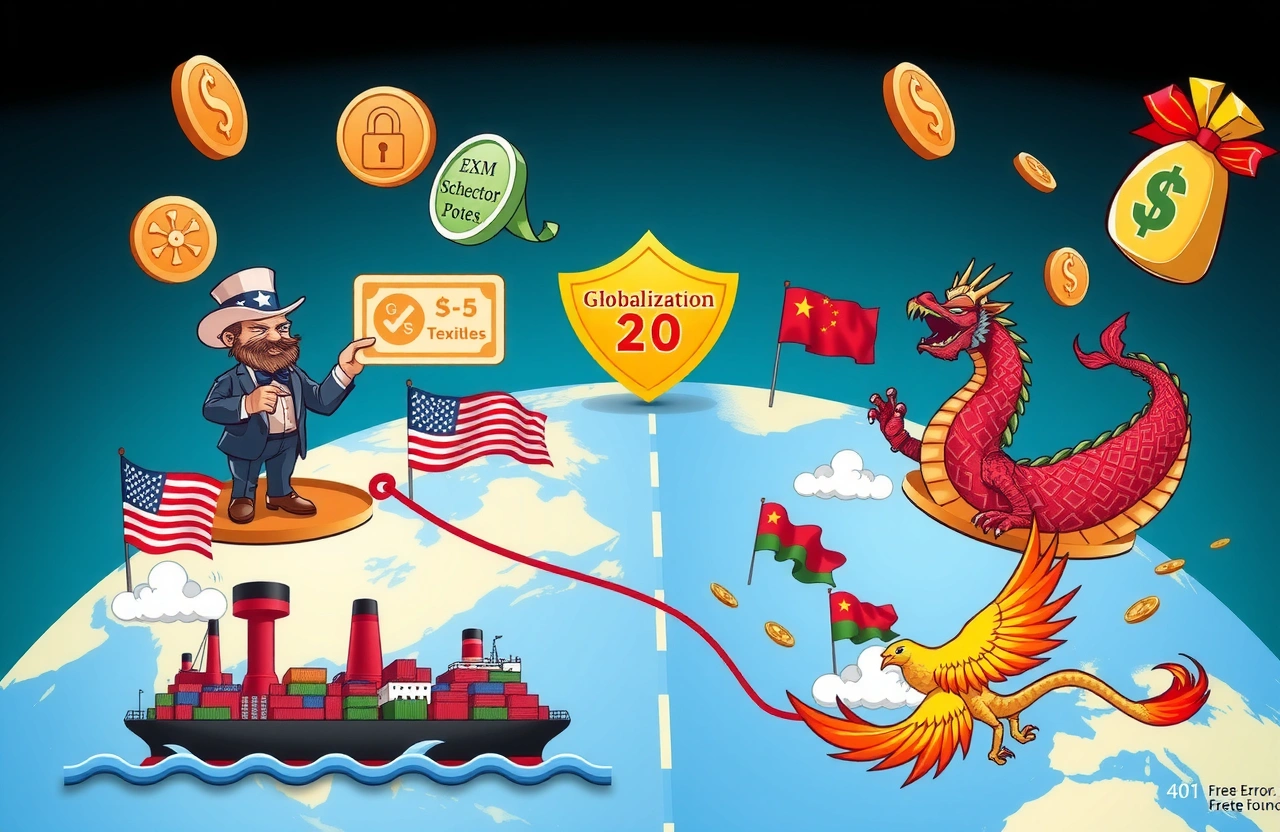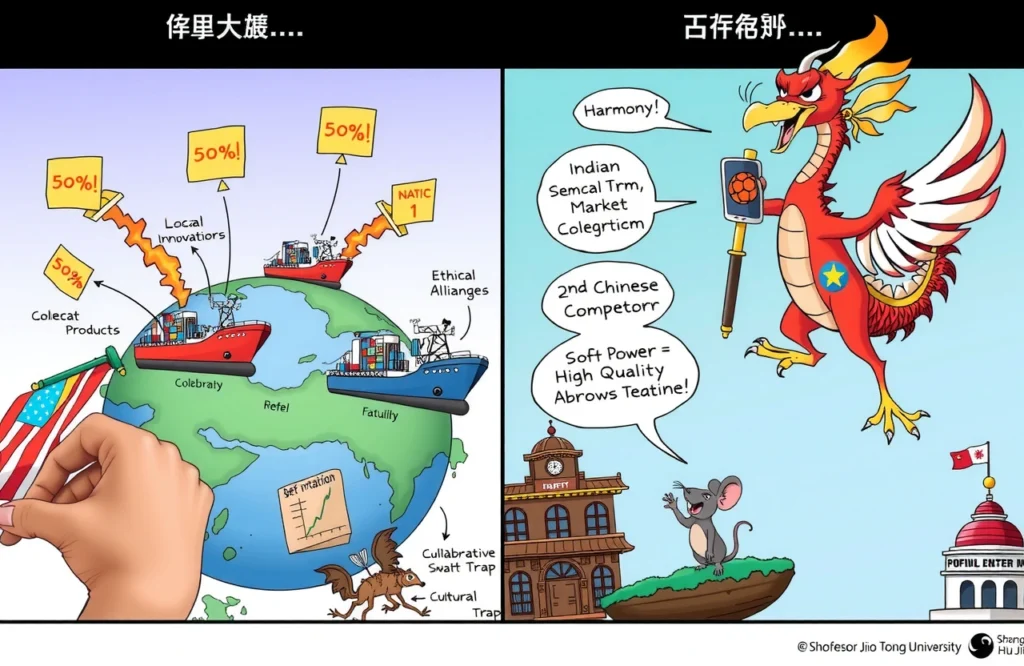The Shifting Sands of Global Trade Dynamics
In today’s volatile economic landscape, trade tensions highlight a profound transformation. Speaking at the 2025 China Enterprise Globalization Forum, Shanghai Jiao Tong University’s Hu Jie, a respected finance professor, provided valuable insights into this era of change. His analysis suggests that the U.S., through persistent tariff policies, might achieve progress on its core objectives. These developments come amid Globalization 2.0, where nations prioritize security over mere profit. Businesses and investors find Hu Jie’s perspectives essential for navigating uncertainties. Startups engaging in international trade discover actionable strategies for resilience.
Globalization 2.0: Redefining Priorities and Principles
The world has entered a new phase of economic interaction, starkly different from past models. Hu Jie emphasizes that Globalization 1.0 primarily centered on financial gain, assuming all players focused on maximizing revenues. However, Globalization 2.0 dramatically shifts this hierarchy: national security now dominates, followed by value alignment, with economic interests relegated to third place. Examples include U.S. measures to protect technology sectors from perceived foreign threats.
Security as the Primary Driver
Countries increasingly scrutinize trade deals through the lens of strategic risks, not just costs. Hu Jie notes that agreements once based on cost-benefit analyses must now account for vulnerabilities like supply chain dependencies. For instance, U.S. restrictions on semiconductor exports reflect this mindset.
Value Alignment in the New Era
Shared ethics and governance standards now catalyze partnerships, influencing investment flows. Businesses must align with this trend to thrive, as seen in alliances formed around sustainable practices.
America’s Tariff Approach and Core Aims
Hu Jie outlines how U.S. strategies extend beyond simple import taxes to reshape international commerce. The four goals pursued by the U.S. through tariffs form the cornerstone of its economic policy aimed at recalibrating global imbalances.
Objective One: Reducing the Trade Deficit
America seeks to narrow its chronic trade gap, particularly with China. Tariffs aim to make imports costlier, thus boosting exports. For example, duties on electronics could lift U.S. manufacturing output by 5–10% by 2030. Strategies include:
– Imposing higher levies on deficit-driving goods
– Negotiating reciprocal access in key markets
This goal shows encouraging signs as domestic production rises.
Objective Two: Repatriating Industries
Bringing supply chains back home centers on reducing overdependence on overseas factories. Tariffs penalize offshoring, nudging sectors from semiconductors to textiles to relocate. Factories reopening in the U.S. Midwest illustrate this shift. Challenges remain, but incentives like subsidies accelerate progress.
Objective Three: Increasing Blue-Collar Employment
A resurgence in manufacturing jobs targets America’s workforce. Hu Jie links tariffs to higher demand for local labor in sectors like automotive.
Objective Four: Boosting Fiscal Revenue
Government coffers gain from tariff collections, funding infrastructure. This revenue stream could grow modestly, supporting public investments. For deeper insight, explore USTR data on import duties.
The Foundation of Tariff Tactics and Their Wider Context
Underlying U.S. moves are systemic global flaws, not merely political maneuvers. Trump-era policies introduced the concept of ‘broad tariff equivalence,’ encompassing more than just customs duties. Key non-tariff elements include:
– Intellectual property protections to prevent tech leaks
– Environmental and labor standards in trade pacts
– Anti-dumping probes to ensure fair pricing
Three Blind Spots in Globalization Theory
Hu Jie identifies inherent weaknesses that fuel modern tensions. First, globalization unevenly affects populations, creating societal rifts. For example, workers in declining industries experience concentrated losses, eroding unified support.
Strategic Trust and Institutional Harmony
Continual rule-bending for short-term gains disrupts the cooperation needed for stable trade. This devalues mutual agreements over time.
Peace as a Prerequisite for Prosperity
Geopolitical stability underpins economic exchanges. Without it, globalization falters, highlighting security’s newfound primacy.
Projected Outcomes for U.S. Ambitions
Against this backdrop, the four goals pursued by the U.S. through tariffs show measurable potential for improvement according to Hu Jie. Evidence suggests that the trade deficit could tighten as domestic substitution gains steam, supported by data indicating a 20% dip in targeted imports. Blue-collar job figures may rise, with manufacturing employment projected to increase by 2% annually. Industry reshoring and fiscal boosts appear more variable but still positive. Practical steps for adaptation include:
– Diversifying supply chains to lessen tariff impacts
– Investing in automation for cost-competitive job creation
– Engaging in multilateral dialogues to reduce barriers
China’s Path Forward Amid Global Restructuring
For China, this evolution demands strategic pivots toward self-reliance. Hu Jie advises strengthening the domestic economy to cushion external shocks. Actions include ramping up innovation and consumer-driven growth. Businesses exporting to the U.S. can adopt:
– Compliance with non-tariff standards to avoid penalties
– Exploring alternative markets like Southeast Asia
Strategic Maneuvers for Lasting Success
Navigating Globalization 2.0 requires proactive, informed measures. Leaders must embrace this transformed reality—where security, values, and profits coexist differently. Tools for resilience include cross-border collaborations and digital tools for market analysis. Ultimately, Hu Jie’s insights underscore that the four goals pursued by the U.S. through tariffs will advance inconsistently, yet smart planning can transform risks into growth. For ongoing updates and expert resources, visit platforms like the World Trade Organization. Engage now with international trade forums to share experiences and build pathways to a more balanced global economy.




